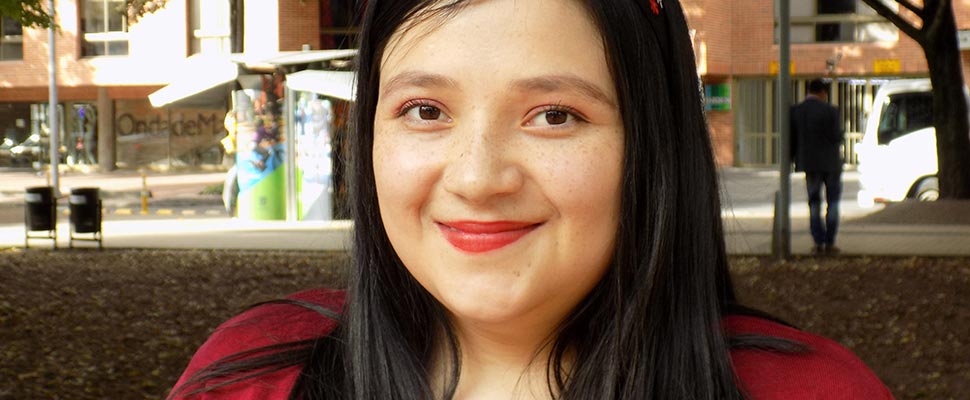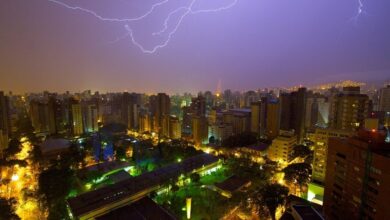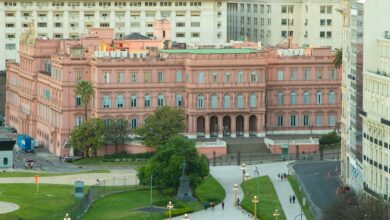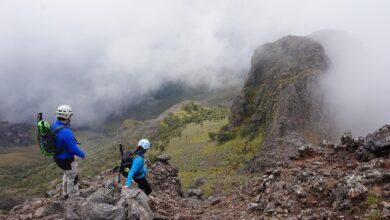The Colombian volunteer that traveled around the world with Peace Boat
On December 26, 2018, Peace Boat (an international NGO based in Japan) left the port of Yokohama with a Colombian passenger.

The Woman Post | Carolina Rodríguez Monclou
Peace Boat (a Japan-based international NGO), departed from the port of Yokohama with about a thousand passengers from Japan, China, Taiwan, Singapore, Malaysia, South Korea, and Thailand. Among the Asians, a Colombian named Jessica Prieto had been accepted as a volunteer to teach Spanish on the ship.
Along 100 days, Peace Boat would cover a southern hemisphere route, docking in 19 ports around Asia, Africa, and South America.
Jessica has a degree in modern languages from Javeriana University and already had experience teaching English and Spanish in Colombia. After passing the interviews and exams with the Japanese NGO, two weeks before departing, Jessica arrived for the first time in Tokyo: “I’ve always been impressed by the values that move Japanese society, so I looked a way to be able to go and experience the best of this culture” recounts.
Jessica has dark hair and her skin is white as porcelain. She speaks with kindness and her thin lips draw always a shy smile. Jessica has experience as an English-language instructor giving private classes and teaching in international well-known academies such as Berlitz Corporation. The Woman Post spoke with the volunteer to know more about her journey.
The Woman Post: Which is the mission of this organization (Peace Boat)?
Jessica Prieto: Peace Boat is a Japanese NGO that promotes peace, human rights, and sustainability. It carries out its activities in partnership with various organizations in different countries and one of their principal activities to raise funds is through a tourist cruise that they organized at least 3 or 4 times a year.
TWP: Nevertheless, their mission focus on raise awareness about the current issues around the world, right?
JP: Exactly. There are not only passengers that want to travel but also in each port joined us different speakers, activists, and people related to a problematic or cause from the port that we were visiting.
TWP: Were you amazed at realizing that so many Japanese wanted to learn Spanish?
JP: To be honest, people may ask why to teach Spanish and English in a ship that departures from Japan, and the reason is that for some participants, learning to communicate with local people is very important. I dictated at least 25 open classes in the ship and it was very fulfilling realizing how people had so much interest and curiosity for the Spanish language and the culture of the Hispanic countries.
Also Read: Looking for colonial history? This is Casa Blanca
TWP: Most of the students were Japanese?
JP: In the private lessons all of them were Japanese. But for the open lessons, there were people from multiple countries, not only from Japan but also from China, Singapore, Malaysia, and England.
TWP: Did you meet another Colombian on board?
JP: Yes, I met Camilo Herrera, founder of the “A Liter Of Light Colombia”, a project that is originally from the Philippines that intends to bring light to developing countries. What they do is teach locals how to build solar panels with recyclable materials. Mainly this work was very active in all the Africa area where a big amount of these facilities was delivered to access to light.
TWP: How was being a teacher inside the cruise?
JP: Well, it is very different from teaching in a classroom, school, or academy because in the ship even if there was still existing the student and teacher figure, those barriers reduced because we were traveling together. We shared a very unique experience, so building those memories together brought us closer.
TWP: Did you get sea-sickness?
JP: You get used to the movement until it feels normal. There are parts of the world, especially the area that connects Japan and China, that the route was very turbulent, and well, despite those circumstances, luckily at that time the lessons had not yet begun. However, we needed to be careful, rest well, be healthy physically, because the sea-sickness it does affect a lot.
Author’s note: “sea-sickness” also known as “motion sickness” occurs when there are symptoms such as fatigue, uneasiness, dizziness, and vomiting during boat trips.
TWP: Which was the most memorable event that you experienced in the ship?
JP: When we went to Uruguay, Pepe Mujica was invited to give a speech but at that time he was sick so went his wife instead, the senator Lucía Topolansky. She gave a moving and beautiful speech about the cooperation between Uruguay and Japan, but also about the importance of nuclear weapons abolition. Her arrival caused a great commotion between the Japanese and all of us because we were conscious of the importance and impact of a figure like hers.
TWP: And which destiny impacted you the most?
JP: The place that marked me and I clearest remember is Madagascar. I felt that freshness of being in a place in which the priorities and way to see life is very different. It is almost healing. The economic conditions in Madagascar is very delicate because is a country which lacks of infrastructure and more investment on the quality of human life. However, the people are very warm and welcoming. For me, the visit was a real eye-opener to be more grateful.
LP: What do you get from your peace experience with Peace Boat?
TWP: It is an experience that brought me a lot personally because of that cultural exchange and sharing with all kinds of people. I learned a new way of communicating based on empathy. Before the journey, I used to be negative with the situation of Colombia because I was immersed in the routine and sometimes is something difficult to handle but I realized that we are a very rich country because of our biodiversity and people so we should take advantage of it. We need to learn to appreciate and value what is from us.




